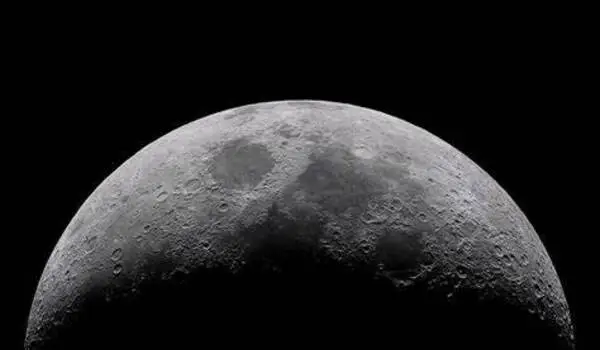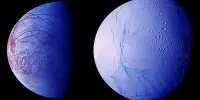Researchers have made the initial steps toward discovering liquid solvents that could one day aid in the extraction of essential building components from lunar and Martian rock dust, an important step toward enabling long-term space flight.
Using machine learning and computer modeling, Washington State University researchers identified roughly a half-dozen promising solvents for extracting elements on the moon and Mars for 3D printing. The study, published in the Journal of Physical Chemistry B, is conducted by Soumik Banerjee, an associate professor in WSU’s School of Mechanical and Materials Engineering.
Ionic liquids, or strong solvents, are liquid salts.
“The machine learning work brought us down from the 20,000-foot to the 1,000-foot level,” Banerjee said. “We were able to down-select a lot of ionic liquids very quickly, and then we could also scientifically understand the most important factors that determine whether a solvent is able to dissolve the material or not.”
The machine learning work brought us down from the 20,000-foot to the 1,000-foot level. We were able to down-select a lot of ionic liquids very quickly, and then we could also scientifically understand the most important factors that determine whether a solvent is able to dissolve the material or not.
Soumik Banerjee
NASA, which financed Banerjee’s research, hopes to send humans back to the moon as part of its Artemis mission, and then further into space to Mars. However, in order to carry out such long-term trips, astronauts will need to employ the materials and resources found in extraterrestrial habitats, such as 3D printing to create structures, tools, or parts from critical elements retrieved from lunar or Martian soil.
“In situ resource utilization is a big deal over the next couple of decades for NASA,” Banerjee said in a statement. “Otherwise, we would need a terribly high payload of materials to carry from Earth.”
Acquiring those building materials must be done in an environmentally friendly and energy-efficient way. The method to mine the elements also can’t use water, which isn’t available on the moon. Ionic liquids, which Banerjee’s group has been studying for more than a decade for use in batteries, could be the answer.

Testing each ionic liquid candidate in a lab is expensive and time-consuming, however, so the researchers used machine learning and modeling at the level of atoms to narrow down hundreds of thousands of candidates. They looked for those that might digest lunar and Martian materials, extract important elements such as aluminum, magnesium, and iron, regenerate themselves, and perhaps produce oxygen or water as a byproduct to help provide life-support.
Identifying exceptional properties that the solvents will require, the researchers were able to identify approximately half a dozen very strong possibilities. The size of the molecular ions that make up the salts, the surface charge density, which is the charge per unit area of the ions, and the mobility of the ions in the liquids were all important variables in their success.
In a second study, researchers from the University of Colorado evaluated a few ionic liquids in the lab for their capacity to dissolve substances. They plan to eventually construct a lab- or pilot-scale reactor and test promising solvents with lunar regolith-like materials.
















